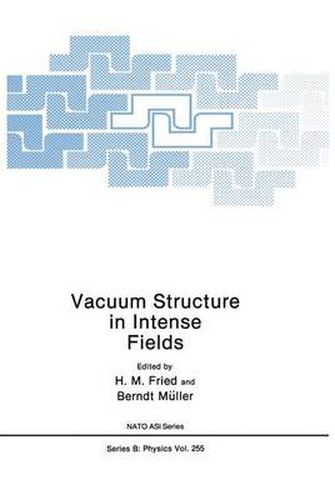Readings Newsletter
Become a Readings Member to make your shopping experience even easier.
Sign in or sign up for free!
You’re not far away from qualifying for FREE standard shipping within Australia
You’ve qualified for FREE standard shipping within Australia
The cart is loading…






This Advanced Study Institute (ASI) brought together two distinct * schools of approach to Quantum Electrodynamics (QED) in the presence of intense, external, electromagnetic fields, in an effort to lay a joint foundation for a needed theoretical explanation of the sharp e+ e- resonances observed in the scattering of very heavy IOns. These (GSI/Darmstadt) experiments, whose history, latest reconfirmations, and most recent data were presented in three opening sessions (Bokemeyer, Koenig), show a smooth background of positron (e+) production, as a function of e+ kinetic energy. Superimposed upon this background are four very sharp peaks, of narrow widths (~ 30 KeV) and of clear experimental significance (‘ 5 standard deviations). Most ofthese peaks correspond to sharp, essentially back-to-back electron-positron emission in the ions’ center of mass. Following the approach of supercritical potential theory (SPT), where the total ionic charge unit Z satisfies Z > 137, it has been possible to provide a detailed and apparently correct understanding of the smooth e+ e- background; a coherent description of different facets of this approach, emphasizing the nature of the charged, supercritical vacuum, was described by the authors responsible for the invention of SPT (Greiner, Muller, Rafelski). In addition, predictions for related phenomena were outlined by other lecturers using the SPT approach (Bawin, Soff, SsJrensen).
$9.00 standard shipping within Australia
FREE standard shipping within Australia for orders over $100.00
Express & International shipping calculated at checkout
This Advanced Study Institute (ASI) brought together two distinct * schools of approach to Quantum Electrodynamics (QED) in the presence of intense, external, electromagnetic fields, in an effort to lay a joint foundation for a needed theoretical explanation of the sharp e+ e- resonances observed in the scattering of very heavy IOns. These (GSI/Darmstadt) experiments, whose history, latest reconfirmations, and most recent data were presented in three opening sessions (Bokemeyer, Koenig), show a smooth background of positron (e+) production, as a function of e+ kinetic energy. Superimposed upon this background are four very sharp peaks, of narrow widths (~ 30 KeV) and of clear experimental significance (‘ 5 standard deviations). Most ofthese peaks correspond to sharp, essentially back-to-back electron-positron emission in the ions’ center of mass. Following the approach of supercritical potential theory (SPT), where the total ionic charge unit Z satisfies Z > 137, it has been possible to provide a detailed and apparently correct understanding of the smooth e+ e- background; a coherent description of different facets of this approach, emphasizing the nature of the charged, supercritical vacuum, was described by the authors responsible for the invention of SPT (Greiner, Muller, Rafelski). In addition, predictions for related phenomena were outlined by other lecturers using the SPT approach (Bawin, Soff, SsJrensen).